The flowers are blooming, the birds are chirping and sunny days are steadily replacing the gloom of winter. Spring is upon us and one of my favorite wines to enjoy this time of year is Chablis. These wines should not be confused with the low quality, jug wine made infamous in the 1970's. In fact, quite the contrary, authentic Chablis is all about freshness, elegance and purity.Chablis is the northernmost wine district of Burgundy, one of France's most acclaimed wine regions. This is undeniably white wine country and Chablis' signature grape is Chardonnay. Unlike Chardonnay produced in warmer climates such as California, Burgundy's cool climate produces wines which are light and lemony, and known more for their lively acidity and minerality than opulent fruit and spice. These wines are perfect for sipping on a bright, sunny Spring day or paired with a wide variety of cuisines.I recently had the pleasure of attending a Chablis tasting in Miami at La Mar by Gastón Acurio located in the tony Mandarin Oriental Hotel. This chic Peruvian eatery strategically overlooks both the beautiful Biscayne Bay and dramatic Miami skyline. Since it was a beautiful sunny South Florida day, we enjoyed our tasting al fresco, guided by our charming host, Jean François Bordet, President of the Chablis Wine Board and proprietor of Domaine Séguinot-Bordet, his family's winery founded in 1590.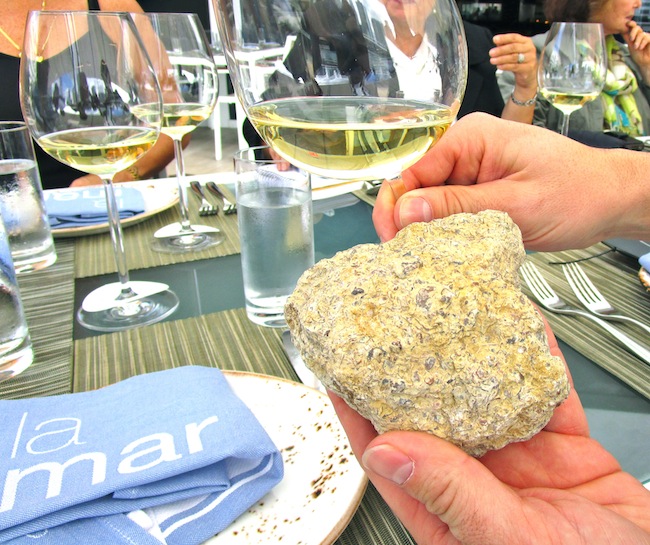 Our tasting involved a selection of wines from three of Chablis' four appellations which are: Petit Chablis, Chablis, Chablis Premier Cru and Chablis Grand Cru. When sampling Burgundian wine, the concept of terroir is always at the forefront (for more information on "terroir" please click here).Terroir essentially refers to the intersection of soil, grape variety, climate and winemaker influence and how these factors come together to create a wine that is unique to a specific place which cannot be produced anywhere else in the world. Key to this theory are Climats, or designated plots of land with specific geological and climatic conditions, which impart their own unique impression on wine.
Our tasting involved a selection of wines from three of Chablis' four appellations which are: Petit Chablis, Chablis, Chablis Premier Cru and Chablis Grand Cru. When sampling Burgundian wine, the concept of terroir is always at the forefront (for more information on "terroir" please click here).Terroir essentially refers to the intersection of soil, grape variety, climate and winemaker influence and how these factors come together to create a wine that is unique to a specific place which cannot be produced anywhere else in the world. Key to this theory are Climats, or designated plots of land with specific geological and climatic conditions, which impart their own unique impression on wine.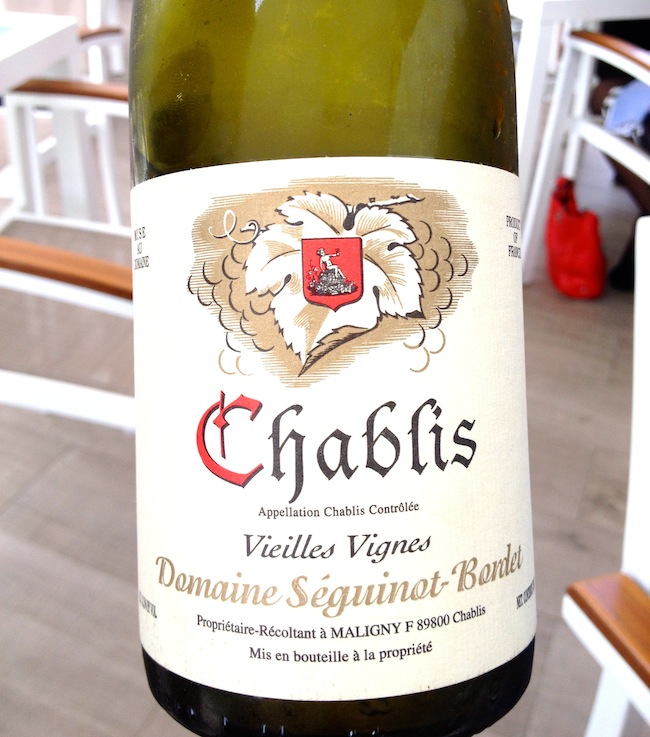 The soils of Chablis are legendary for their limestone content and were formed long ago in the Kimmeridgian period (Upper Jurassic era). This unique soil contains millions of fossils of oysters and other marine creatures and is primarily found in the Chablis and Premier Cru appellations.Petit Chablis, on the other hand, is situated on soils formed more recently, which contain limestone from the Portlandian period. The Chablis Grand Cru vines grow on steep slopes rife with Kimmeridgian limestone as well as an extremely rich subsoil.
The soils of Chablis are legendary for their limestone content and were formed long ago in the Kimmeridgian period (Upper Jurassic era). This unique soil contains millions of fossils of oysters and other marine creatures and is primarily found in the Chablis and Premier Cru appellations.Petit Chablis, on the other hand, is situated on soils formed more recently, which contain limestone from the Portlandian period. The Chablis Grand Cru vines grow on steep slopes rife with Kimmeridgian limestone as well as an extremely rich subsoil.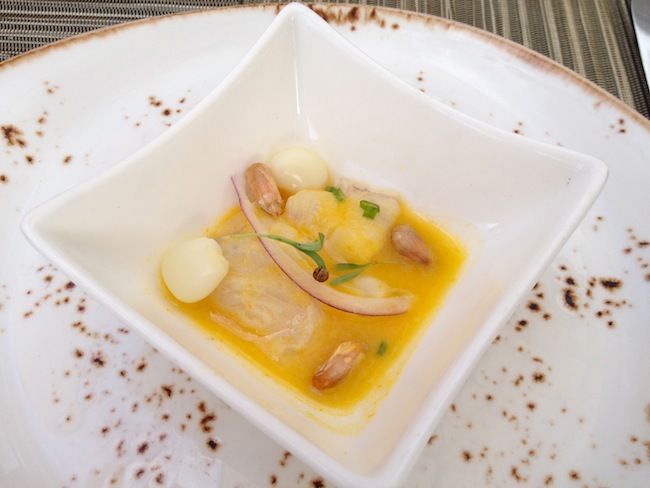 Our tasting featured a selection of wines which beautifully represented their respective appellations. Chef Acurio prepared an assortment of delicious dishes to pair with each group of wines which were served in three consecutive flights.Our first flight featured one wine, the 2013 Domaine Séguinot-Bordet Chablis Vieilles Vignes. Vieilles Vignes means "old vines" which, in this case, are 78 years old and located on the family's 40 acre estate in Maligny. The wine was fermented in oak barrels (15% new) and stainless steel (85%) resulting in a fresh, lively wine that was a classic example of the region!The wine paired beautifully with Chef's dishes which included Cebiche Nikei with tuna, red onion, nori, avocado, daikon cucumber, and tamarind leche de tigre; Causa Congrejo featuring beet causa, crab, avocado, huancaina sauce, fried kale, cherry tomatoes and quail egg; and a perennial favorite, Empanadas with pork adobo and pepian de choclo, chalaca, and huacatay sauce. Chef Acurio's dishes were as much a feast for the eyes as the palate and the wine definitely held it's own amidst the onslaught of deliciousness. It's hallmark acidity tempered the richness and variety of textures while also allowing the flavors of the food to shine through.
Our tasting featured a selection of wines which beautifully represented their respective appellations. Chef Acurio prepared an assortment of delicious dishes to pair with each group of wines which were served in three consecutive flights.Our first flight featured one wine, the 2013 Domaine Séguinot-Bordet Chablis Vieilles Vignes. Vieilles Vignes means "old vines" which, in this case, are 78 years old and located on the family's 40 acre estate in Maligny. The wine was fermented in oak barrels (15% new) and stainless steel (85%) resulting in a fresh, lively wine that was a classic example of the region!The wine paired beautifully with Chef's dishes which included Cebiche Nikei with tuna, red onion, nori, avocado, daikon cucumber, and tamarind leche de tigre; Causa Congrejo featuring beet causa, crab, avocado, huancaina sauce, fried kale, cherry tomatoes and quail egg; and a perennial favorite, Empanadas with pork adobo and pepian de choclo, chalaca, and huacatay sauce. Chef Acurio's dishes were as much a feast for the eyes as the palate and the wine definitely held it's own amidst the onslaught of deliciousness. It's hallmark acidity tempered the richness and variety of textures while also allowing the flavors of the food to shine through.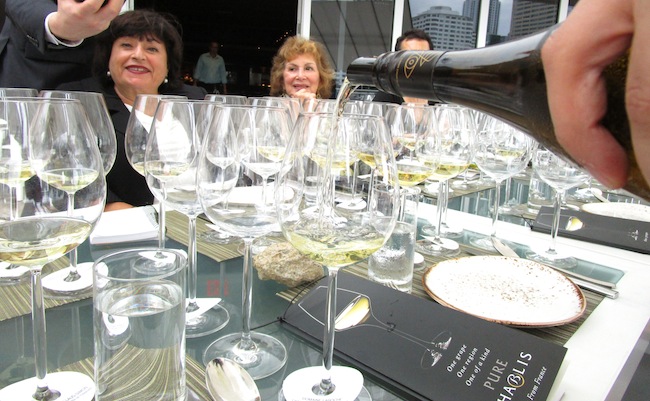 The second course featured three Chablis offerings from the Premier Cru appellation which is comprised of 40 individual Climats, 17 of which are most prominent.These wines generally exhibit more complexity and structure than basic Chablis and have good aging potential as well, approximately 5 to 10 years. The words "Premier Cru" and the name of the Climat of origin may be added to the name Chablis on the wine's label.
The second course featured three Chablis offerings from the Premier Cru appellation which is comprised of 40 individual Climats, 17 of which are most prominent.These wines generally exhibit more complexity and structure than basic Chablis and have good aging potential as well, approximately 5 to 10 years. The words "Premier Cru" and the name of the Climat of origin may be added to the name Chablis on the wine's label.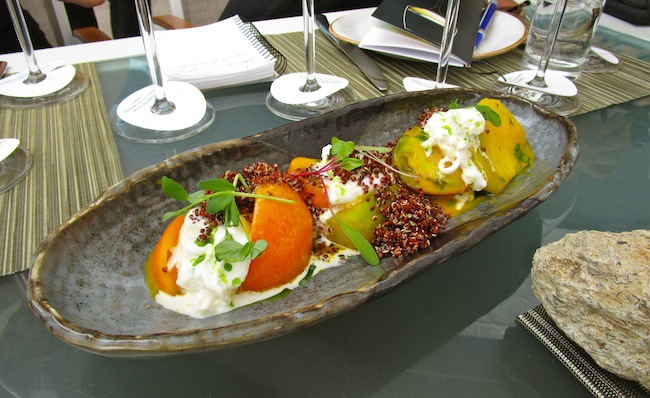 The three wines in our second flight included the 2011 Maison Simonnet Febvre Chablis 1er Cru Vaillons; 2011 Domaine Billaud-Simon Chablis 1er Cru Montée de Tonnerre; and the 2009 Domaine Oudin Chablis 1er Cru Vaugiraut. This collection of wines provided an insightful snapshot of the Premier Cru appellation.The Simmonet Febvre Vaillons had notes of white peach and citrus with a clean, racy acidity and lengthy finish; the Billaud-Simon Montée de Tonnerre was a study in elegance with floral and mineral aromas accompanied by vibrant citrus, limestone and gunflint; the Domaine Oudin Vaugiraut was slightly older than the two other wines and had a slight oxidative quality in addition to notes of gunflint, minerality and citrus.Chef Acurio's Quinoa Caprese was beautifully colorful with heirloom tomatoes, basil, red quinoa, burrata cheese with an aji amarillo vinaigrette which paired best with the Domain Oudin Vaugiraut. The Seared Scallop Conchitas with lomo saltado sauce, garlic chips and crispy sweet potato strings paired brilliantly with the other two wines.
The three wines in our second flight included the 2011 Maison Simonnet Febvre Chablis 1er Cru Vaillons; 2011 Domaine Billaud-Simon Chablis 1er Cru Montée de Tonnerre; and the 2009 Domaine Oudin Chablis 1er Cru Vaugiraut. This collection of wines provided an insightful snapshot of the Premier Cru appellation.The Simmonet Febvre Vaillons had notes of white peach and citrus with a clean, racy acidity and lengthy finish; the Billaud-Simon Montée de Tonnerre was a study in elegance with floral and mineral aromas accompanied by vibrant citrus, limestone and gunflint; the Domaine Oudin Vaugiraut was slightly older than the two other wines and had a slight oxidative quality in addition to notes of gunflint, minerality and citrus.Chef Acurio's Quinoa Caprese was beautifully colorful with heirloom tomatoes, basil, red quinoa, burrata cheese with an aji amarillo vinaigrette which paired best with the Domain Oudin Vaugiraut. The Seared Scallop Conchitas with lomo saltado sauce, garlic chips and crispy sweet potato strings paired brilliantly with the other two wines.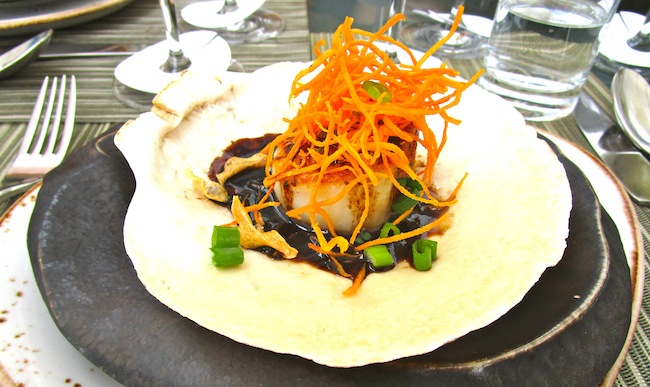 The third course featured two wines from Chablis' Grand Cru appellation which consists of seven Climats: Blanchot, Bougros, Les Clos, Grenouilles, Preuses, Valmur and Vaudésir.These wines represent the jewel in the crown of the Chablis region. They also have the most aging potential (usually around 7-10 years), a more generous mouthfeel, lengthier finish and more complexity which is usually manifested in notes of spice, honey, almond and dried fruit.
The third course featured two wines from Chablis' Grand Cru appellation which consists of seven Climats: Blanchot, Bougros, Les Clos, Grenouilles, Preuses, Valmur and Vaudésir.These wines represent the jewel in the crown of the Chablis region. They also have the most aging potential (usually around 7-10 years), a more generous mouthfeel, lengthier finish and more complexity which is usually manifested in notes of spice, honey, almond and dried fruit.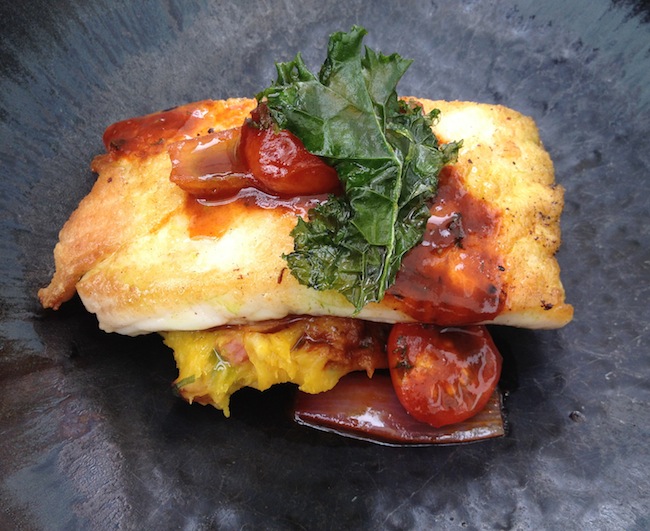
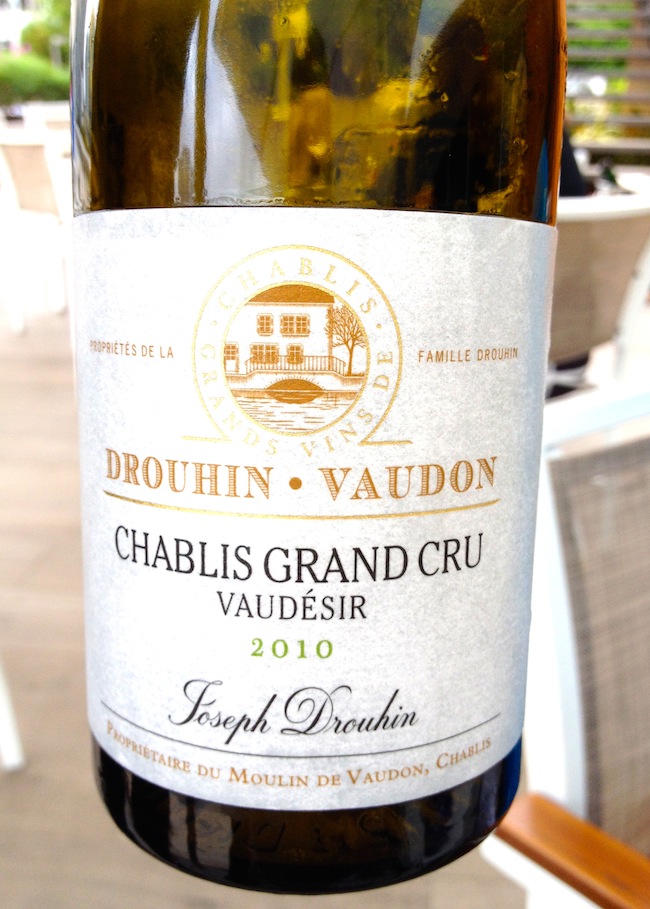 The two Grand Cru wines featured in our third course were the 2010 Maison Drouhin Vaudon Chablis Grand Cru Vaudésir and the 2009 Domaine Laroche Chablis Grand Cru Blanchot.The Drouhin Vaudon Vaudésir, served en magnum, is a product of thirty year old vines whose grapes were manually harvested and gently pressed to preserve the quality of the fruit. The wine was then fermented entirely in French oak (0% new) for 12 months and the resulting wine offered a complex array peach, honey, spice and almond with a lengthy, mineral-tinged finish. This nuanced wine had a rich texture yet was also was bright and lively with plenty of finesse - a beautiful effort!The Domaine Laroche Blanchot, a product of 45 year old vines, was also manually harvested and fermented partially in stainless steel (60%) while the remainder went into French oak barrels (15% new) for 14 months. The resulting wine was also lovely and layered with notes of peach, apple, limestone and honey which continued to evolve in the glass over our third course. To enjoy with our Grand Cru Chablis, Chef Acurio prepared a mouth watering Amazon fish with tamarind chorillana sauce, yucca and smoked bacon - a truly divine pairing!
The two Grand Cru wines featured in our third course were the 2010 Maison Drouhin Vaudon Chablis Grand Cru Vaudésir and the 2009 Domaine Laroche Chablis Grand Cru Blanchot.The Drouhin Vaudon Vaudésir, served en magnum, is a product of thirty year old vines whose grapes were manually harvested and gently pressed to preserve the quality of the fruit. The wine was then fermented entirely in French oak (0% new) for 12 months and the resulting wine offered a complex array peach, honey, spice and almond with a lengthy, mineral-tinged finish. This nuanced wine had a rich texture yet was also was bright and lively with plenty of finesse - a beautiful effort!The Domaine Laroche Blanchot, a product of 45 year old vines, was also manually harvested and fermented partially in stainless steel (60%) while the remainder went into French oak barrels (15% new) for 14 months. The resulting wine was also lovely and layered with notes of peach, apple, limestone and honey which continued to evolve in the glass over our third course. To enjoy with our Grand Cru Chablis, Chef Acurio prepared a mouth watering Amazon fish with tamarind chorillana sauce, yucca and smoked bacon - a truly divine pairing!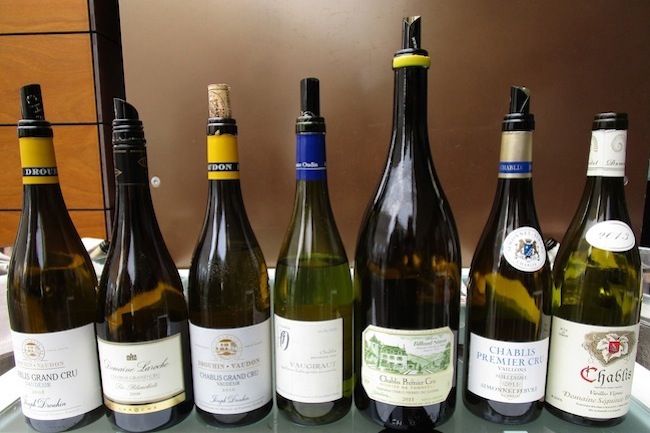 I hope after reading this post you also feel inspired to explore the delightful wines of Chablis this Spring! And for more information on the Chablis region, please go ahead and click here.Cheers,
I hope after reading this post you also feel inspired to explore the delightful wines of Chablis this Spring! And for more information on the Chablis region, please go ahead and click here.Cheers,
Stephanie Miskew
Author